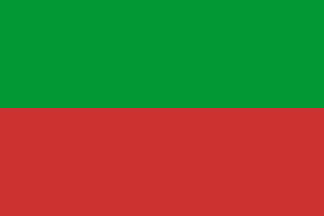 klaus-michael schneider
klaus-michael schneider
Keywords: carchi | montufar |
Links: FOTW homepage | search | disclaimer and copyright | write us | mirrors

Last modified: 2021-08-26 by  klaus-michael schneider
klaus-michael schneider
Keywords: carchi | montufar |
Links: FOTW homepage |
search |
disclaimer and copyright |
write us |
mirrors
 image by Jens Pattke and Falko Schmidt, 1 July
2007
image by Jens Pattke and Falko Schmidt, 1 July
2007
Parishes:
See also:
Montúfar canton was established by a Legislative Decree issued on 27
September 1905, upon request of Sociedad Patriótica, an association founded on
27 April 1902 by inhabitants of San Gabriel.
The canton's namesake is
Carlos Montúfar y Larrea (1780-1816), a hero of the South American independence.
Montúfar was the "third man" of the famous Andine exploration organized by
Alexander von Humboldt (1769-1859) and Aimé Bonpland (1773-1858). In June 1802,
Montúfar was hired by the German baron to guide the expedition searching the
Inca's road. Humboldt had spent the previous six months either in the Quito
residence or the Los Chillos estate owned by Montúfar's family. This caused the
wrath of another scholar and subsequent hero of the independence, Francisco José
de Caldas (1768-1816), who had supported Humboldt's first research in Quito and
was replaced by Montúfar for a reason still unknown. Jorge Arias de Greiff
believes that the dispute was based on scientific grounds, while Caldas himself
insinuated that Montúfar had a love affair with the baron. The expedition
marched southwards, climbed mount Chimborazo, then believed to be the Earth's
highest peak, on 23 June, and recorded Inca archaeological remains and customs
in Latacunga, Ambato, Riobamaba, Cuenca and Loja provinces. On 1 August 1802,
they entered Peru, staying
in Lima from October to December 1802. Montúfar's
diary, discovered in 1899 by Marcos Jiménez de la Espada and published in
Boletin de la Sociedad Geográfica de Madrid, vol. 15, is a less-known complement
to Humboldt's official record. Namely, it includes a very detailed description
of the Inca fortress of Ingapirca.
Montúfar traveled to Mexico, La
Havana, the USA and Europe with Bonpland and Humboldt. In Paris, he probably
attended Napoléon I's coronation (1804) and met Simón Bolívar; he moved the
next year to Madrid, where he enrolled at the Real Academia de Nobles to obtain
a military education. During the War of Spanish Independence, he fought at the
battle of Bailén, the siege of Zaragoza and the skirmish of Somosierra, being
elevated to the rank of Lieutenant Colonel. In 1810, he was sent back to Quito
to establish a provincial government loyal to the King of Spain. However, he
took the independendist party and joined his family's regiment, commanded by his
father, the Marquis de Selva Alegre, President of the Quito Government. Betrayed
by the Sánchez de Orellana party, he was captured and jailed in Panamá. He
escaped and joined Bolívar's army, taking part to the conquest of Bogotá.
Captures again after the battle of Cuchilla del Tambo, near Popayán, he was
sentenced to death and shot in Buga on 31 July 1816.
[T. Hampe Martinéz.
2003. Carlos Montúfar y Larrea (1780-1816), el Quiteño compañero de Humboldt.
Revista de Indias, 62:226, 711-720]
http://revistadeindias.revistas.csic.es/index.php/revistadeindias/article/view/469/537
Ivan Sache, 7 September 2018
The image is based on www.ame.gov.ec.
Falko Schmidt, 1 July 2007
The flag is composed of two horizontal stripes. The upper, green stripe means
the everlasting spring that clothes the Montúfar fields all the year round,
where, thanks to the works of the farmers, pastures and plots are covered with
emerald velvet. The second, red, stripe, highlights the burning faith and
sincere patriotism expressed by the inhabitants in their ideals and cooperation
with works of national interest.
http://www.gadmontufar.gob.ec/simbolos.php
Canton website
Ivan
Sache, 7 September 2018